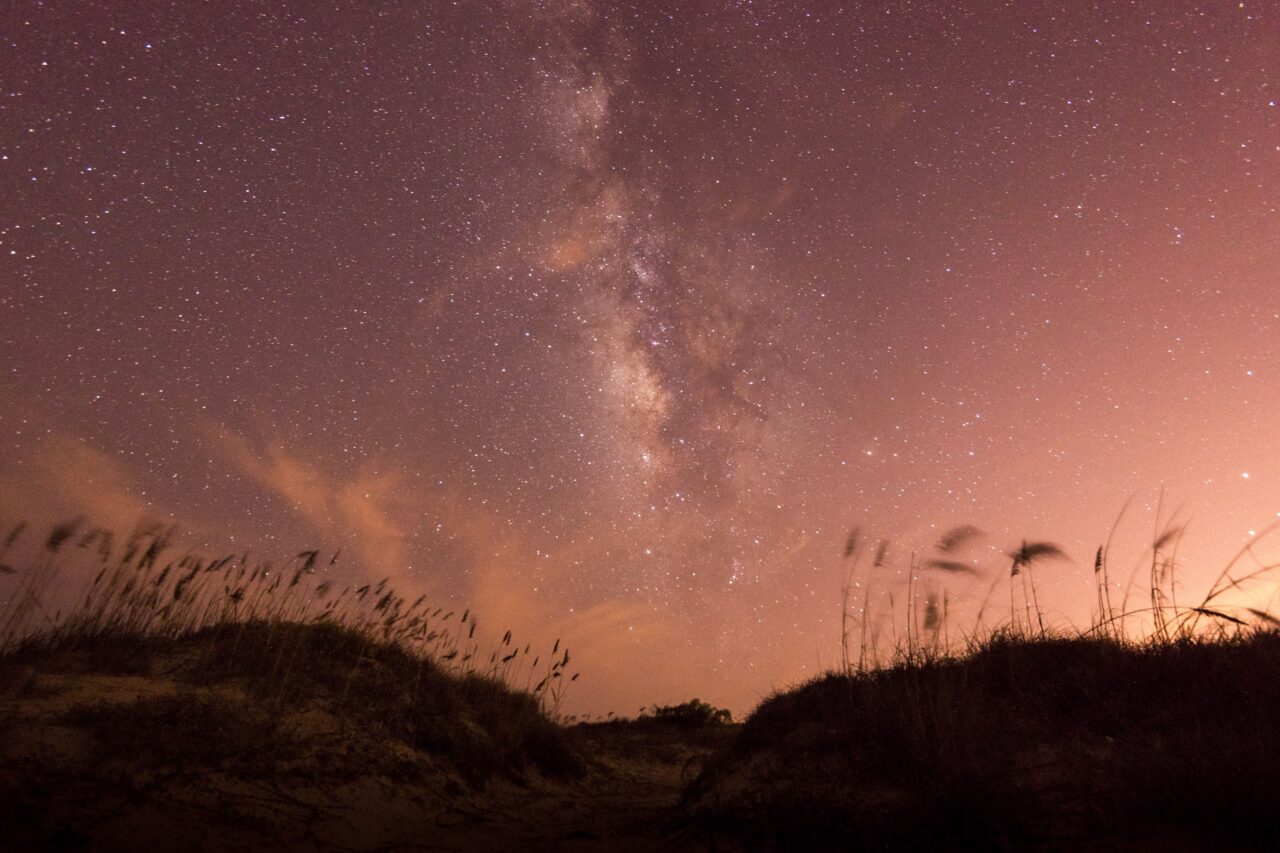
✽
An expanding cloud of brownish dust rises from beneath the orbital launch mount. Intermittent flashes of bright fire pierce through a storm of sand and pulverized concrete. Starship—the biggest rocket ever built—slowly lifts off from a launch pad in Boca Chica, a village in South Texas. A staccato of low, bursting sounds punctuates the slightly hazy morning air. A shock wave makes the tents of now wide-awake occupants undulate.
At this time in April 2023, I was staying near the home base of Elon Musk’s company SpaceX to understand what this event meant for the people witnessing it and, ultimately, for the future of space exploration. I watched the first launch of the integrated Starship/Super Heavy system with about 150 space enthusiasts who had gathered in the viewing area of a popular local business called Rocket Ranch. They were a motley crew of different ages and professions from near and far: from engineers to artists, army veterans to hippies, united in tense anticipation of this historic event. Some had been waiting impatiently for this very moment since SpaceX moved to South Texas in 2014.
When the rocket started ascending into the sky, jubilant cheering erupted. Friends and strangers alike reached their arms out to embrace. Some shed tears of joy.
Soon, however, it became obvious that something was wrong. Some of the engines didn’t ignite. The second stage of the rocket failed to separate from the first-stage Super Heavy booster, and the whole vehicle started to tumble. Four minutes into its first flight, Starship exploded after SpaceX activated its flight termination system. (No people were on board.)
However, for the people who I watched the launch with, the sense of success didn’t wane. They saw it as a historic moment—an important step in the quest to return astronauts to the Moon, settle on Mars, and, ultimately, make space travel more accessible and affordable. They envisioned a future where humans could become a multiplanetary species.
As I was writing my field notes from the day, I wondered what my experience of the launch would have been had I watched it from a different place with a group that holds another perspective. After all, while the idea of space exploration inspires technological awe for some, for others it’s a painful reminder of colonial histories and exploitative capitalist practices here on Earth.
✽
A few days later, I was hit with that more critical perspective when two environmental activists from nearby towns arrived in Boca Chica. I heard someone say the site looked like “a war zone.”
Indeed, when I looked around, I saw mangled shards of metal and chunks of concrete that must have been flung with great force, tearing and bending the fences surrounding the launch site. Now they were lying silently across the adjacent plains. I treaded carefully amid this otherworldly landscape punctuated with gaping craters etched in the scorched sand. The vast majority of people were there on a “treasure hunt” for pieces of Starship that the blowup might have left scattered around the area.






